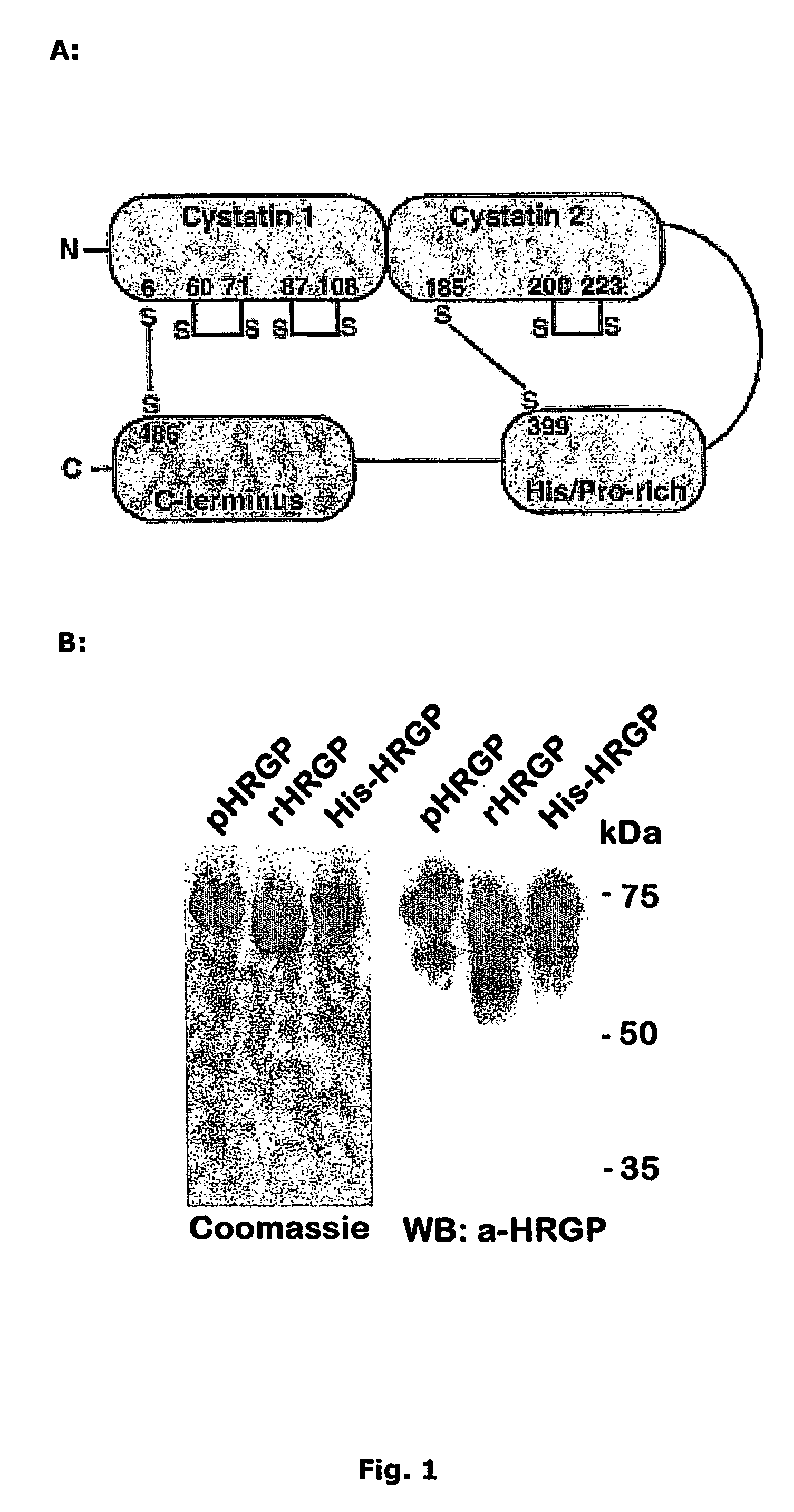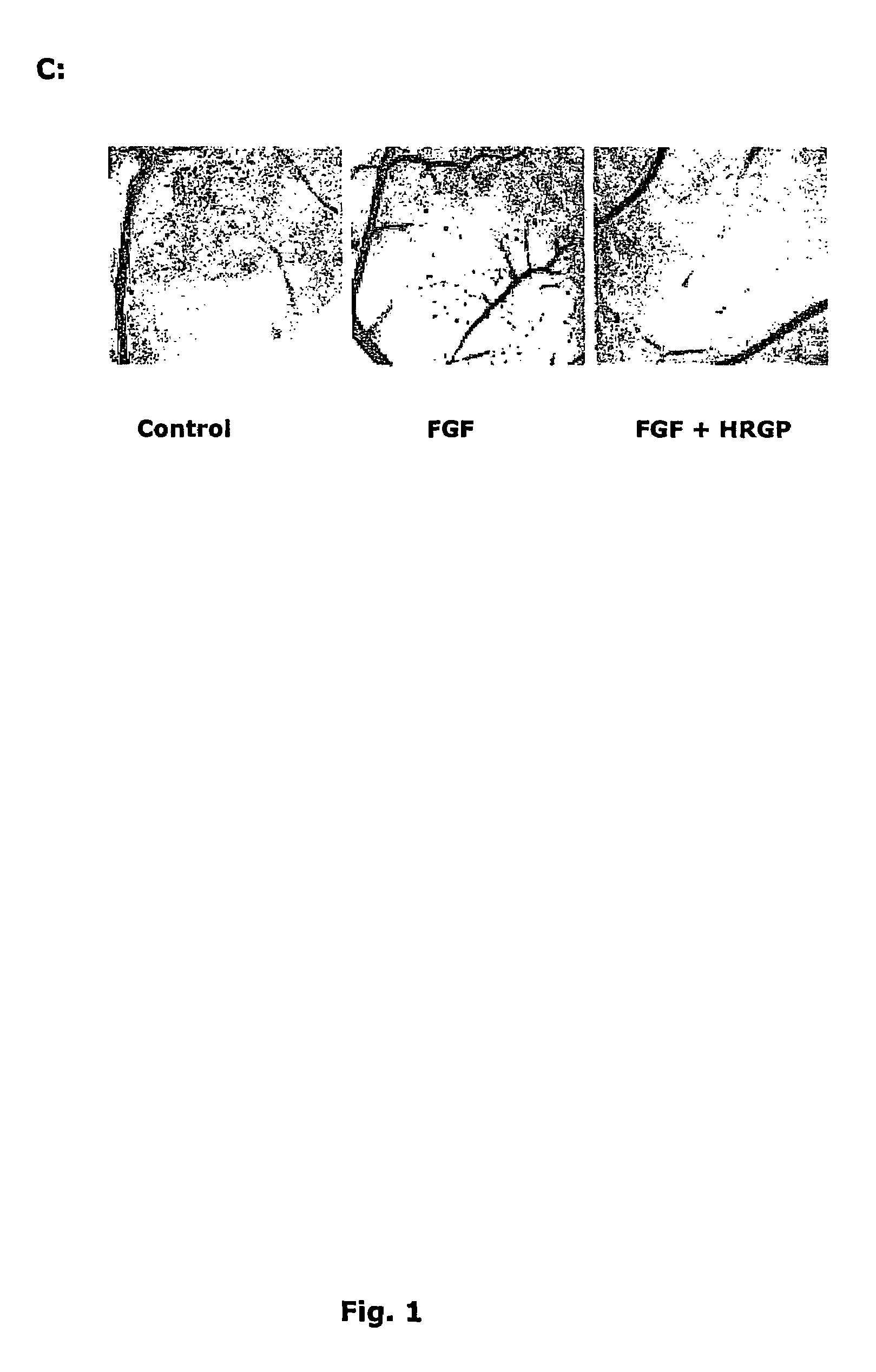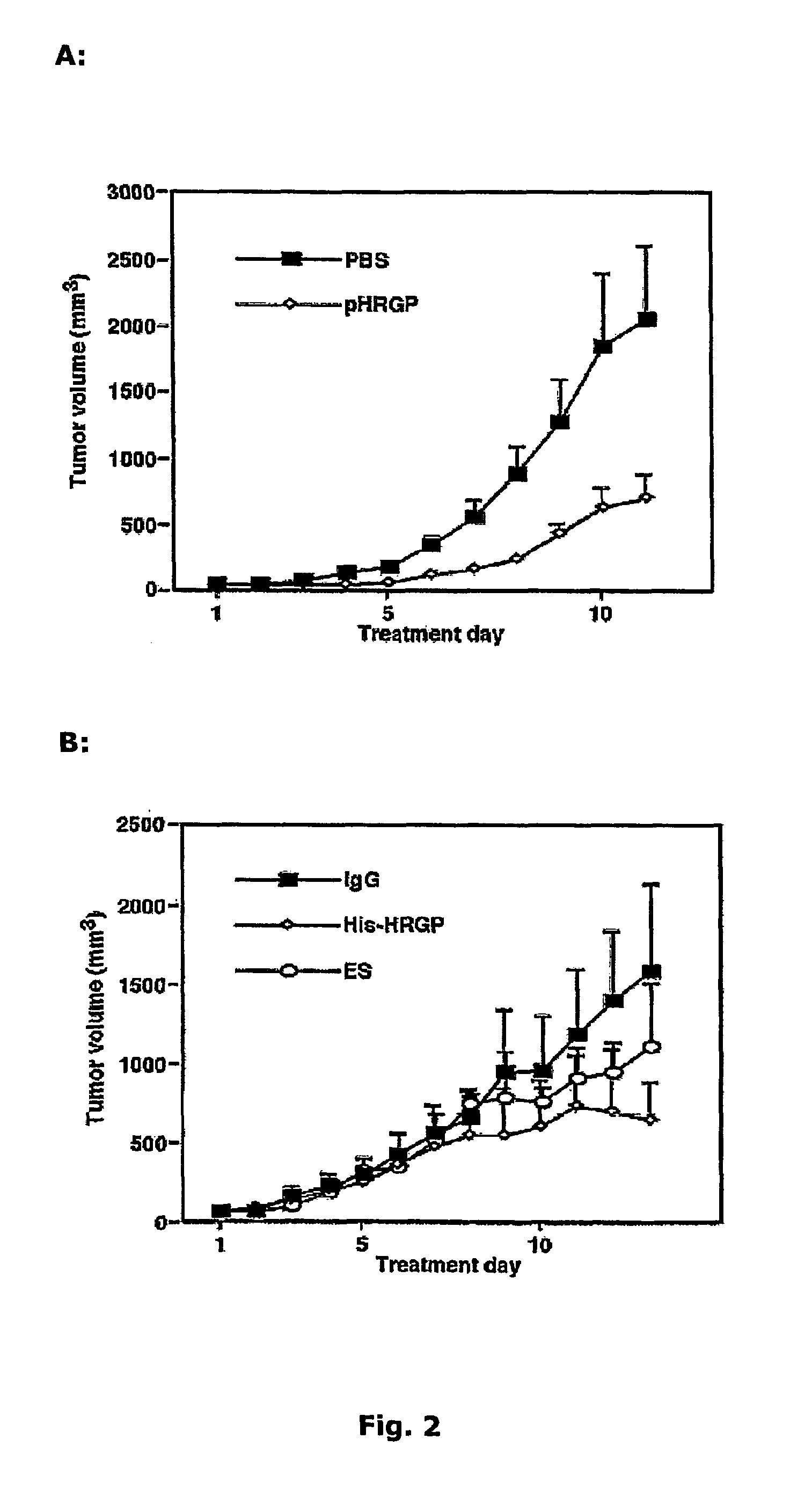Endogenous peptide and active subfragments thereof
a technology of endogenous peptides and active subfragments, which is applied in the field of angiogenesis, can solve the problems of excessive angiogenesis, deficient angiogenesis, and often problematic synthesis of longer peptides
- Summary
- Abstract
- Description
- Claims
- Application Information
AI Technical Summary
Benefits of technology
Problems solved by technology
Method used
Image
Examples
experiment 1
Procedure
[0193]The porcine aortic endothelial (PAE) cell line overexpressing FGF receptor-1 (FGFR-1) (Wennström et al 1992) was cultured in Ham's F12 / 10% fetal bovine serum (FCS) and NIH 3T3 murine fibroblasts were cultured in Dulbecco's modified medium (DMEM) / 10% newborn calf serum (NCS). F12, DMEM and serum were bought from Life Technologies. Primary bovine adrenal cortex capillary endothelial (BCE) cells were cultured on gelatin-coated dishes in DMEM / 10% NCS and 2 ng / ml FGF-2 (Boehringer Mannheim). For chemotaxis assays, both PAE and NIH 3T3 cells were serum-starved over night in 0.1% BSA and BCE cells in 0.5% NCS. Human embryonic kidney (HEK) 293-EBNA cells were cultured in DMEM / 10% FCS. Approximately every second month they were given 0.25 mg / ml G418 (Calbiochem) to ensure positive selection of the EBNA-1 expressing cells.
experiment 2
HRGP Expression Vectors, Transfection and Purification of Protein
[0194]HRGP from three different sources were used in this study; HRGP purified from human plasma (pHRGP) and recombinant HRGP produced in HEK-293-EBNA cells, with or without a His-tag (His-HRGP and rHRGP, respectively).
Procedure
[0195]Full length cDNA encoding human HRGP including the signal sequence (amino acid residues 1-18) was cloned into the pCEP-Pu2 (Vernersson et al 2002) expression vector. Expression vectors for His-tagged HRGP variants were also constructed using the same vector. The truncations were produced by PCR-amplification of shorter parts of the protein. N-terminally of the HRGP coding region, a His-tag (six histidine residues (SEQ ID NO: 29)) was added to enable purification. An enterokinase cleavage site was introduced between the His-tag and the HRGP coding region, to allow removal of the His-tag. In these vectors, the HRGP signal sequence was excluded and instead, the PCR-product was ligated in fram...
experiment 3
HRGP Inhibits CAM Angiogenesis
[0199]The effect of HRGP on anglogenesis was tested in the chicken chorioallantoic membrane (CAM) assay.
Procedure
[0200]The conditions for the chorioallantoic membrane (CAM) assay followed essentially a previously described procedure (Friedlander et al (1995), Dixelius et al, (2000)). FGF-2 (Boehringer Mannheim) and VEGF-A (Peprotech) was used at 0.2 mg per filter and purified pHRGP or rHRGP at 3 mg per filter. The treated CAM's were inspected in a light microscope and the score, from 0 (low) to 3 (high) was based on the number of vessel branch points. Average values for 5-6 embryos were recorded.
Results
[0201]A filter disc soaked in vehicle or growth factor, with or without HRGP, was placed on top of the CAM in the vicinity of a large vessel and incubated for three days. Treatment of the CAM with growth factors, such as FGF-2, stimulated angiogenesis (FIG. 1C; Table 1). Application of FGF-2 or VEGF-A together with pHRGP on the CAM led to an efficient sup...
PUM
| Property | Measurement | Unit |
|---|---|---|
| concentration | aaaaa | aaaaa |
| concentrations | aaaaa | aaaaa |
| pH | aaaaa | aaaaa |
Abstract
Description
Claims
Application Information
 Login to View More
Login to View More - R&D
- Intellectual Property
- Life Sciences
- Materials
- Tech Scout
- Unparalleled Data Quality
- Higher Quality Content
- 60% Fewer Hallucinations
Browse by: Latest US Patents, China's latest patents, Technical Efficacy Thesaurus, Application Domain, Technology Topic, Popular Technical Reports.
© 2025 PatSnap. All rights reserved.Legal|Privacy policy|Modern Slavery Act Transparency Statement|Sitemap|About US| Contact US: help@patsnap.com



